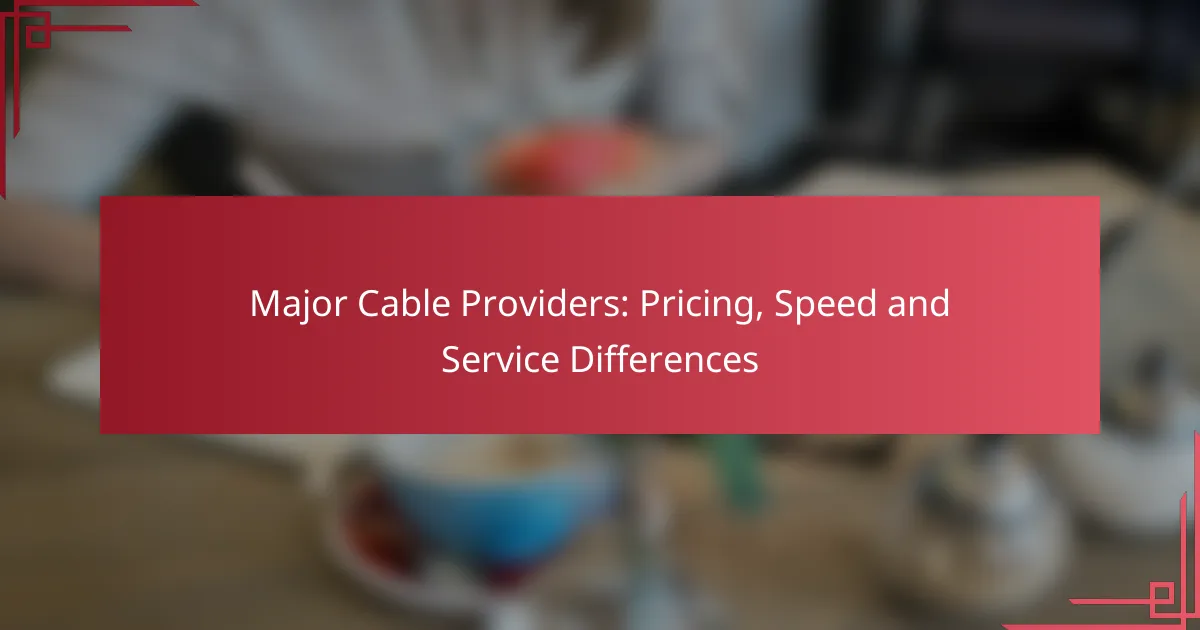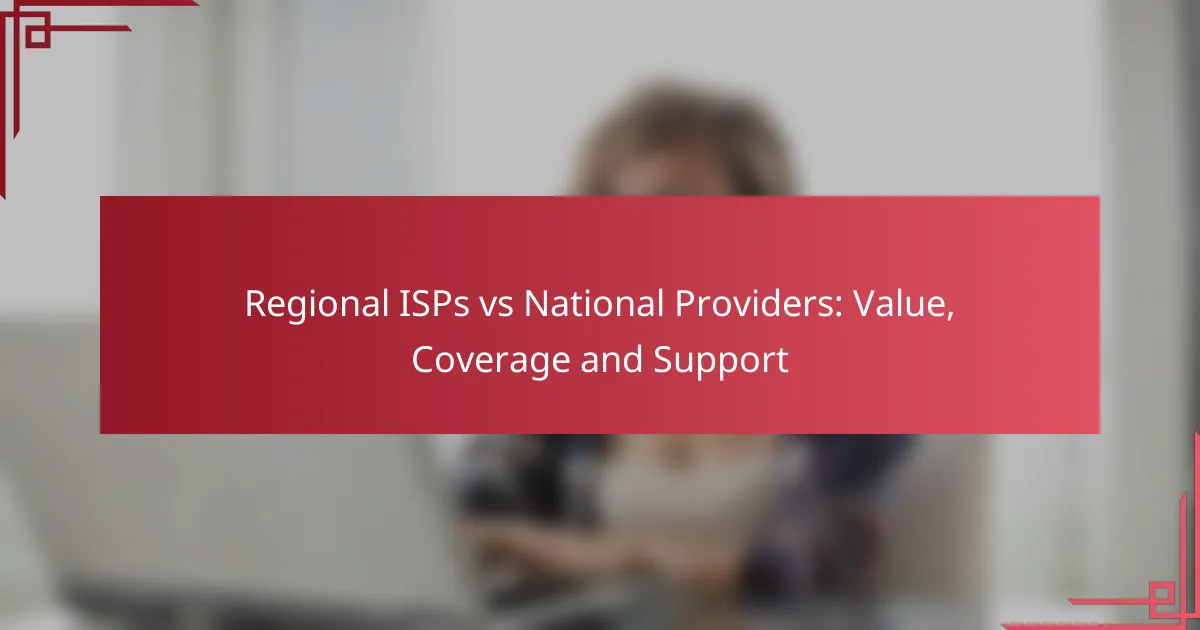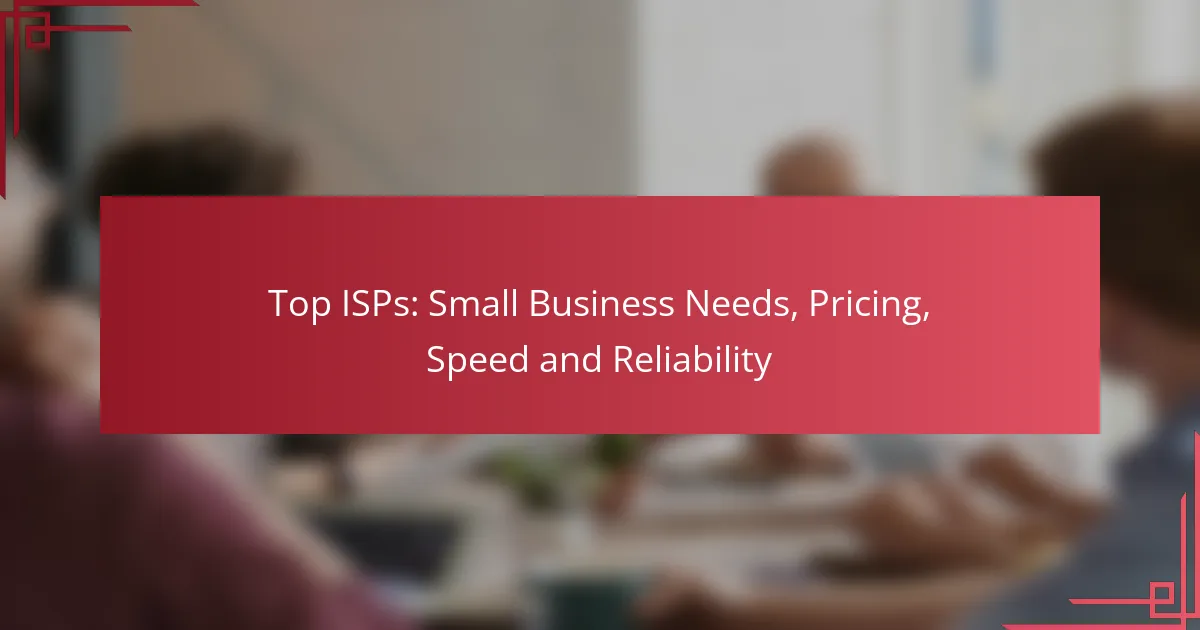The major cable providers in the US, including Comcast Xfinity, Charter Spectrum, AT&T, Cox Communications, and Verizon Fios, offer a diverse range of pricing, internet speeds, and service options. With plans that cater to various budgets and usage needs, it’s crucial for consumers to compare these providers to find the best fit for their requirements.
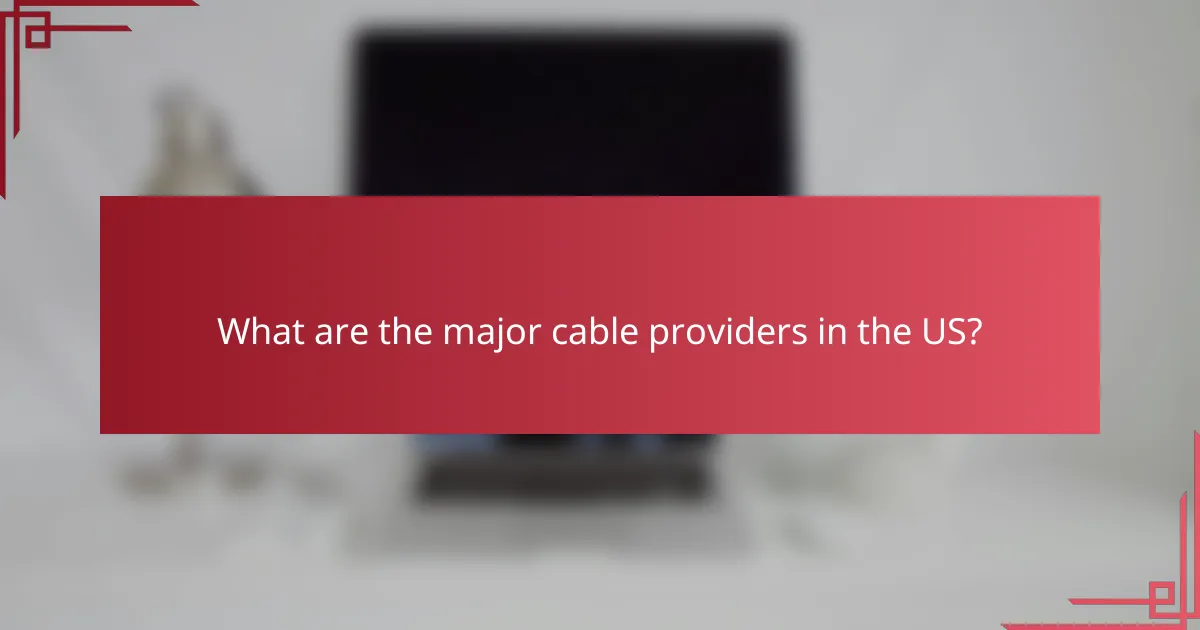
What are the major cable providers in the US?
The major cable providers in the US include Comcast Xfinity, Charter Spectrum, AT&T, Cox Communications, and Verizon Fios. Each provider offers different pricing, internet speeds, and service options, making it essential for consumers to compare them based on their specific needs.
Comcast Xfinity
Comcast Xfinity is one of the largest cable providers in the US, offering a range of internet speeds from around 50 Mbps to over 1 Gbps. Their pricing typically starts in the low $30s per month, but promotional rates may apply for new customers.
Xfinity also provides a variety of bundled services, including TV and phone options. Customers should be aware of potential data caps and fees that may apply after promotional periods end.
Charter Spectrum
Charter Spectrum offers internet plans with speeds ranging from 200 Mbps to 1 Gbps, with pricing starting around $50 per month. One of Spectrum’s advantages is that they do not impose data caps, allowing for unlimited usage.
They also provide bundled services, including cable TV and home phone options. It’s important to check for regional availability and any additional fees that may apply for installation or equipment rental.
AT&T
AT&T provides both DSL and fiber-optic internet services, with speeds that can reach up to 5 Gbps in select areas. Pricing for AT&T’s internet plans generally starts in the mid-$30s per month.
AT&T is known for its fiber service, which offers higher reliability and speed compared to traditional DSL. Customers should verify availability in their area, as fiber service may not be accessible everywhere.
Cox Communications
Cox Communications offers internet plans with speeds from around 10 Mbps to 1 Gbps, with pricing typically starting in the low $30s. They provide a range of service tiers, allowing customers to choose plans that fit their usage needs.
Cox also includes options for bundling with TV and phone services. Be mindful of potential data caps and additional fees for equipment or installation when selecting a plan.
Verizon Fios
Verizon Fios is a fiber-optic provider that offers high-speed internet with speeds ranging from 200 Mbps to 1 Gbps, starting at approximately $40 per month. Fios is known for its low latency and reliable service.
Verizon Fios also offers bundled packages that include TV and phone services. Customers should check for availability, as Fios is not available in all areas, and be aware of any installation fees that may apply.

What are the pricing differences among cable providers?
Cable providers vary significantly in pricing, with plans typically ranging from affordable to premium tiers based on speed and service features. Understanding these differences can help consumers choose the best option for their needs and budget.
Xfinity pricing overview
Xfinity offers a variety of pricing plans that generally range from around $30 to $100 per month, depending on the speed and package selected. Their basic plans provide speeds suitable for light browsing, while higher-tier options cater to heavy users and streaming needs.
Promotional rates are common, but be aware that prices may increase after the initial contract period. Always check the terms for any hidden fees or equipment rental costs that could affect the overall price.
Spectrum pricing overview
Spectrum’s pricing typically starts at about $50 per month for their basic internet service, with higher speeds costing up to $100 or more. They often advertise no contracts, which can be appealing for those who prefer flexibility.
However, Spectrum may charge additional fees for equipment and installation, so it’s wise to factor these into your overall budget. Their plans usually include a range of speeds, making it easier to find a suitable option for different household needs.
AT&T pricing overview
AT&T offers pricing that generally starts around $55 per month for their basic fiber internet service, with prices increasing significantly for higher-speed options. Their fiber plans can reach speeds of up to 1 Gbps, ideal for larger households.
AT&T often includes promotional pricing for the first year, so check the renewal rates carefully. Additionally, installation fees may apply, and bundling with other services can sometimes yield discounts.
Cox pricing overview
Cox’s pricing starts at approximately $50 per month for their basic internet service, with higher-tier plans reaching around $100 or more. They provide a variety of packages that cater to different speed requirements and usage patterns.
Be mindful of the equipment rental fees that can add to the monthly cost. Cox also frequently runs promotions, so it’s beneficial to compare current offers to find the best deal.
Verizon Fios pricing overview
Verizon Fios pricing generally starts at about $40 per month for basic internet service, with higher-speed plans available for around $80 to $100. Their fiber-optic network is known for delivering fast and reliable speeds, making it a strong choice for heavy internet users.
Verizon often provides promotional rates for new customers, but be cautious of price increases after the initial period. Additionally, installation fees may apply, so reviewing the total cost is essential before committing to a plan.
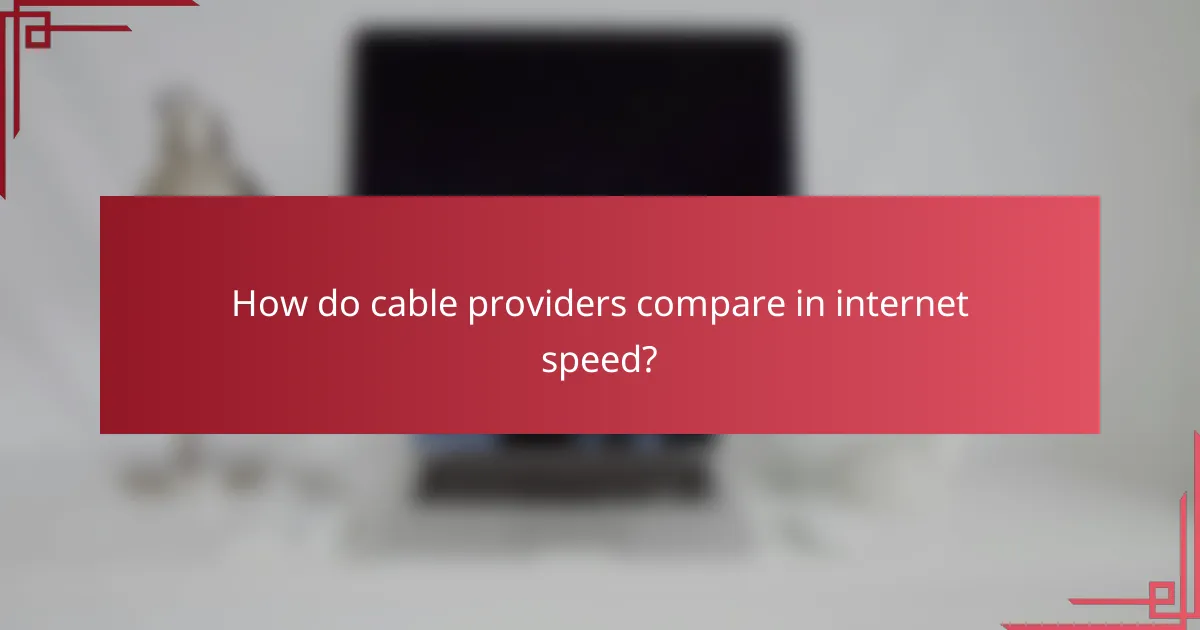
How do cable providers compare in internet speed?
Cable providers vary significantly in internet speed, with options ranging from basic plans suitable for light browsing to high-speed packages ideal for gaming and streaming. Understanding these differences can help consumers choose a plan that meets their specific needs.
Xfinity internet speeds
Xfinity offers a range of internet speeds, typically from around 50 Mbps to over 1,200 Mbps, depending on the plan. Their higher-tier options are well-suited for households with multiple users engaging in bandwidth-intensive activities like streaming in 4K or online gaming.
Customers should consider the speed tier that best fits their usage patterns, as higher speeds often come with increased monthly costs. Additionally, Xfinity frequently runs promotions, so checking for deals can be beneficial.
Spectrum internet speeds
Spectrum provides internet speeds starting at 300 Mbps, with options that can reach up to 1,000 Mbps. This makes it a strong contender for users who require reliable performance for streaming and gaming.
One advantage of Spectrum is that they do not impose data caps, allowing users to enjoy unlimited usage without worrying about overage fees. However, their pricing can vary based on location, so it’s wise to compare local offers.
AT&T internet speeds
AT&T offers both fiber and DSL internet services, with fiber plans boasting speeds from 300 Mbps up to 5,000 Mbps in select areas. This makes AT&T a top choice for users needing ultra-fast connections.
For those in areas without fiber access, AT&T’s DSL speeds are generally lower, often ranging from 5 Mbps to 100 Mbps. Consumers should verify the type of service available in their region to make an informed decision.
Cox internet speeds
Cox provides internet speeds from 10 Mbps to 1,000 Mbps, catering to a variety of users. Their plans are designed to accommodate everything from casual browsing to heavy streaming and gaming.
One notable feature is Cox’s “Panoramic Wi-Fi,” which enhances coverage throughout the home. However, users should be aware of data caps on some plans, which may affect heavy users.
Verizon Fios internet speeds
Verizon Fios offers fiber-optic internet with speeds ranging from 300 Mbps to 940 Mbps. This technology provides a stable and fast connection, ideal for households with multiple devices connected simultaneously.
Fios plans typically come with no data caps, allowing for unlimited streaming and downloading. Consumers should check for availability in their area, as Fios is not as widely available as some other providers.

What customer service ratings do cable providers have?
Customer service ratings for cable providers vary significantly, impacting user satisfaction and overall experience. Factors such as response time, issue resolution, and customer support availability play crucial roles in these ratings.
Xfinity customer service ratings
Xfinity generally receives mixed reviews regarding its customer service. While some customers appreciate the availability of support options, including online chat and phone assistance, others report long wait times and unresolved issues. Ratings often reflect a range from average to below average, depending on the specific region.
To enhance your experience with Xfinity, consider utilizing their online resources first. This can help you resolve common issues without needing to contact customer service directly.
Spectrum customer service ratings
Spectrum’s customer service ratings tend to hover around average, with some customers praising the helpfulness of representatives while others express frustration over service delays. The company has made efforts to improve support through expanded training for staff and more accessible communication channels.
When dealing with Spectrum, it’s advisable to document your interactions and keep records of any service agreements. This can help in case you need to escalate issues or clarify misunderstandings.
AT&T customer service ratings
AT&T often receives higher customer service ratings compared to its competitors, with many users noting prompt and effective assistance. However, experiences can vary widely based on location and the specific service being used, such as internet or television services.
For the best results with AT&T, familiarize yourself with their online support tools and community forums. Engaging with these resources can often lead to quicker resolutions for common problems.
